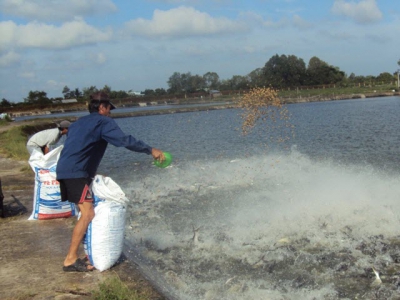Tightened controls imposed on antibiotic residues for Tra fish exports

Facing increasingly stringent product quality requirements, Vietnamese Tra fish exporters must comply with new standards for farming areas, breeding and rearing processes, catching and processing in order to ensure favorable export prospects to the US.
The Ministry of Agriculture and Rural Development issued a new safety control program for Siluriformes fish (mainly Tra and Basa) and related products exported to the US market, which applies strict supervision on all stages of fish farming, transporting, slaughtering/processing, preserving and exporting. Qualifying products must satisfy US criteria on chemical and antibiotic residues and metals.
To Thi Tuong Lan, deputy secretary-general of the Vietnam Association of Seafood Exporters and Producers (VASEP), said the program conforms to the demands of the Food Safety and Inspection Service (FSIS) under the United States Department of Agriculture (USDA). The program introduces two changes to its 2017 version, pertaining to means of transportation and tighter controls of antibiotic residues.
Nguyen Van Kich, general director of the Cafatex Corporation, said controlling the means of transportation is hard given that the farming areas lie along the Tien and Hau rivers, requiring specialized boats to carry the catch. The control of antibiotic residues is also more difficult because businesses buy raw fish from many different farming households.
Despite the difficulties, Lan urged Vietnamese farmers and enterprises to adapt to the new food safety control program, which would also help them respond to similar demands from other markets such as the EU and Japan.
Duong Nghia Quoc, chair of the Vietnam Pangasius Association, said Vietnamese exporters are fulfilling US requirements, helping Tra fish products enjoy the lowest anti-dumping tariffs.
According to To Thi Tuong Lan, 13 Vietnamese facilities have been granted certificates for processing and exporting to the US. Two of them enjoy zero-percent anti-dumping tariff rates, and that the number will likely increase in the coming year.
If small-sized enterprises want to export to the US, they must effectively coordinate with farming households and put forward specific requirements in order to tighten controls on antibiotic residues. In particular, this means that farming households should buy breeders at quality and certified centers. If the breeder is healthy and meets quality requirements, the use of antibiotics will be unnecessary, Lan explained.
According to the VASEP, the US remains a large market for Vietnam’s Tra fish. However, Tra fish exports to the US only reached US$300 million in 2019. To increase export turnover, Vietnamese Tra fish exporters need to improve product quality in order to meet customer needs.
Related news
 Shrimp exports increase 5.7 percent in first half of 2020
Shrimp exports increase 5.7 percent in first half of 2020 Shrimp exports reached US$1.5 billion in the first six months of 2020, up 5.7 percent over the same period last year
 Squid, octopus exports slightly increase in June
Squid, octopus exports slightly increase in June Squid and octopus exports enjoyed a rise of 6.5% to US$48 million during June after previously suffering decreases for three consecutive months due to a low
 Vietnam's catfish industry experiencing tough days, no improvement expected this year
Vietnam's catfish industry experiencing tough days, no improvement expected this year Catfish products saw the strongest decline among seafood exports in the first six months of the year. With weak demand, a gloomy year is anticipated